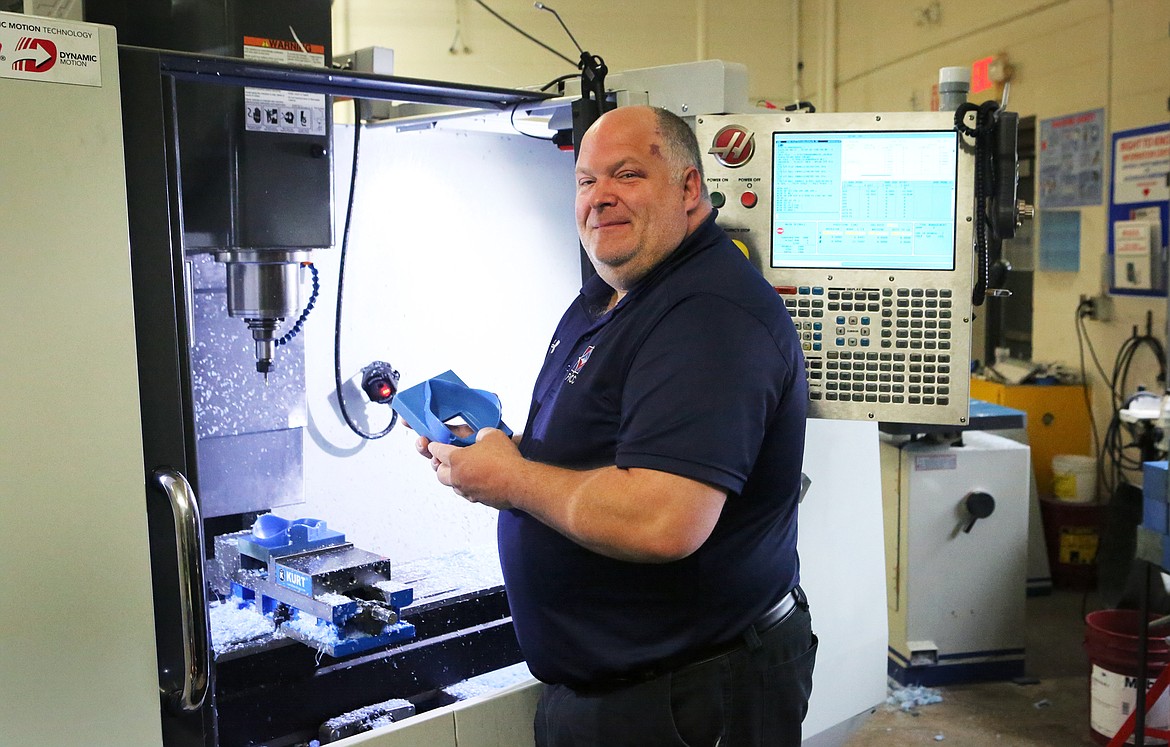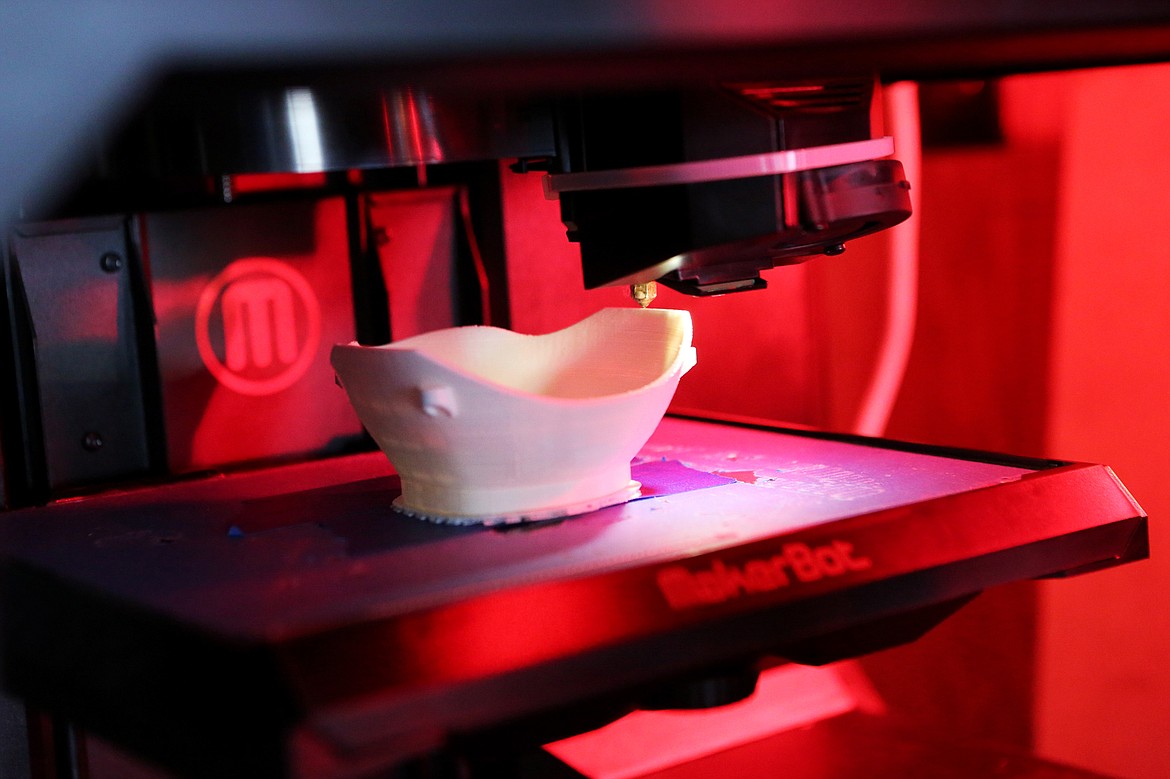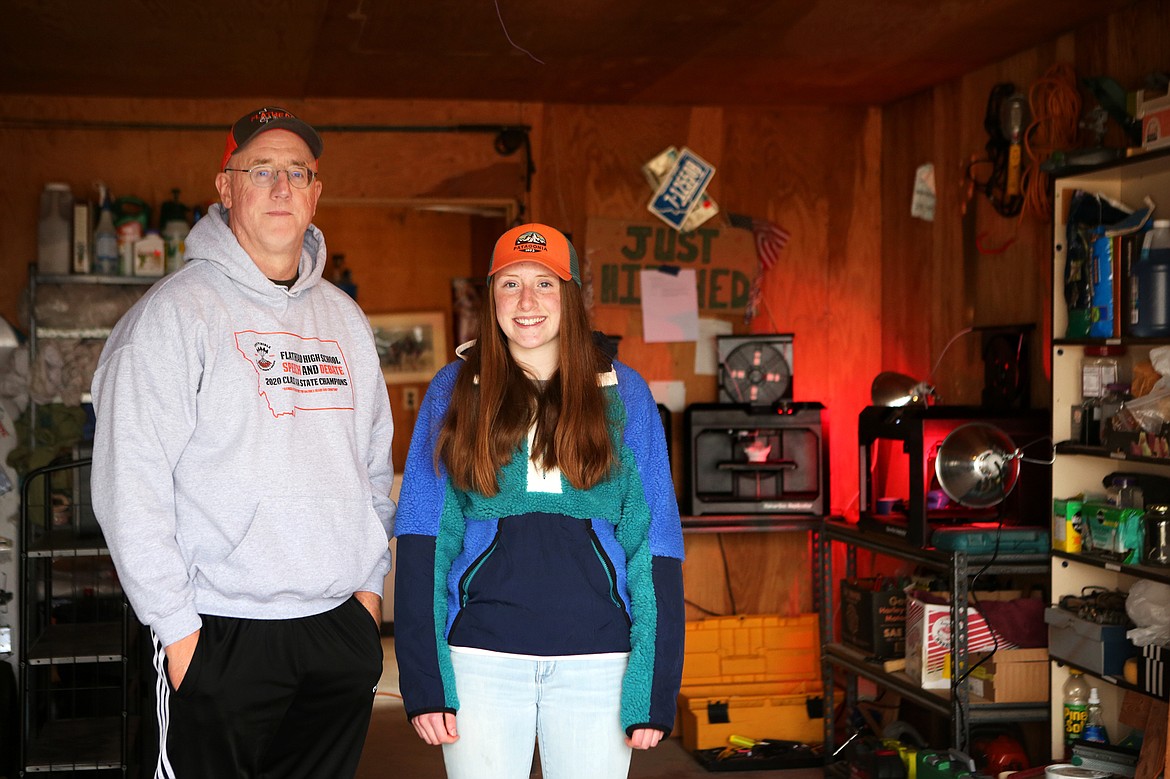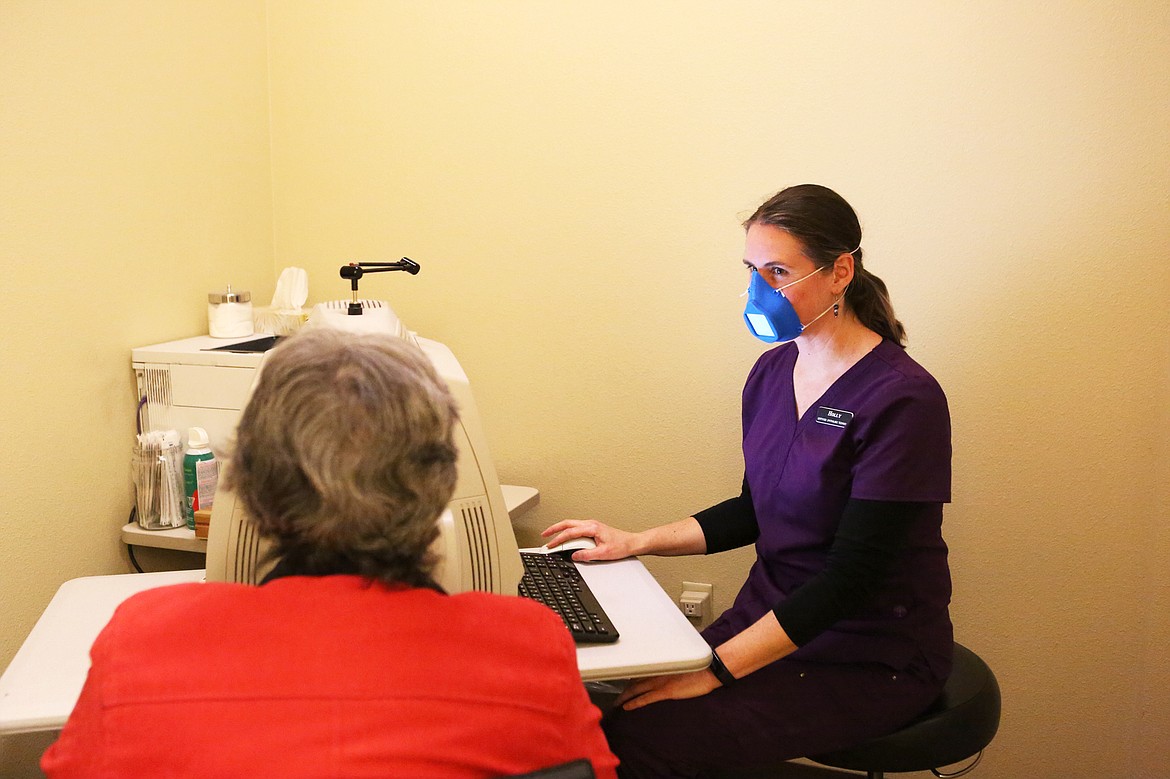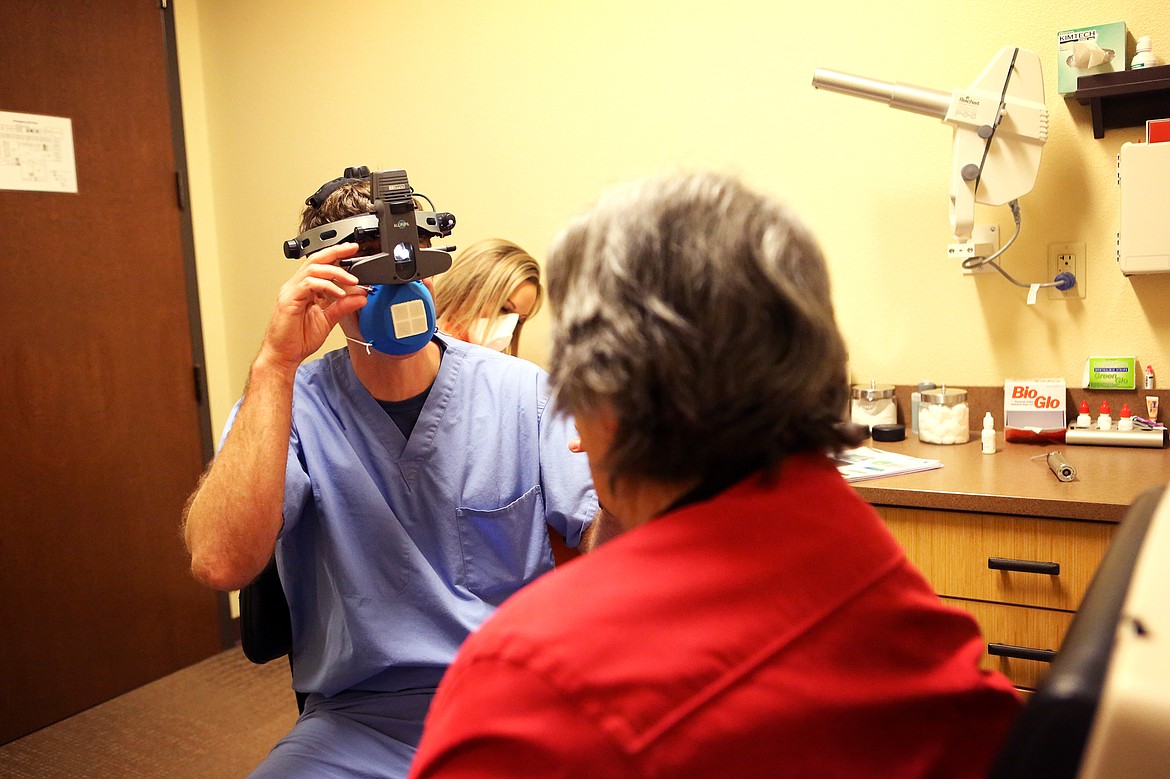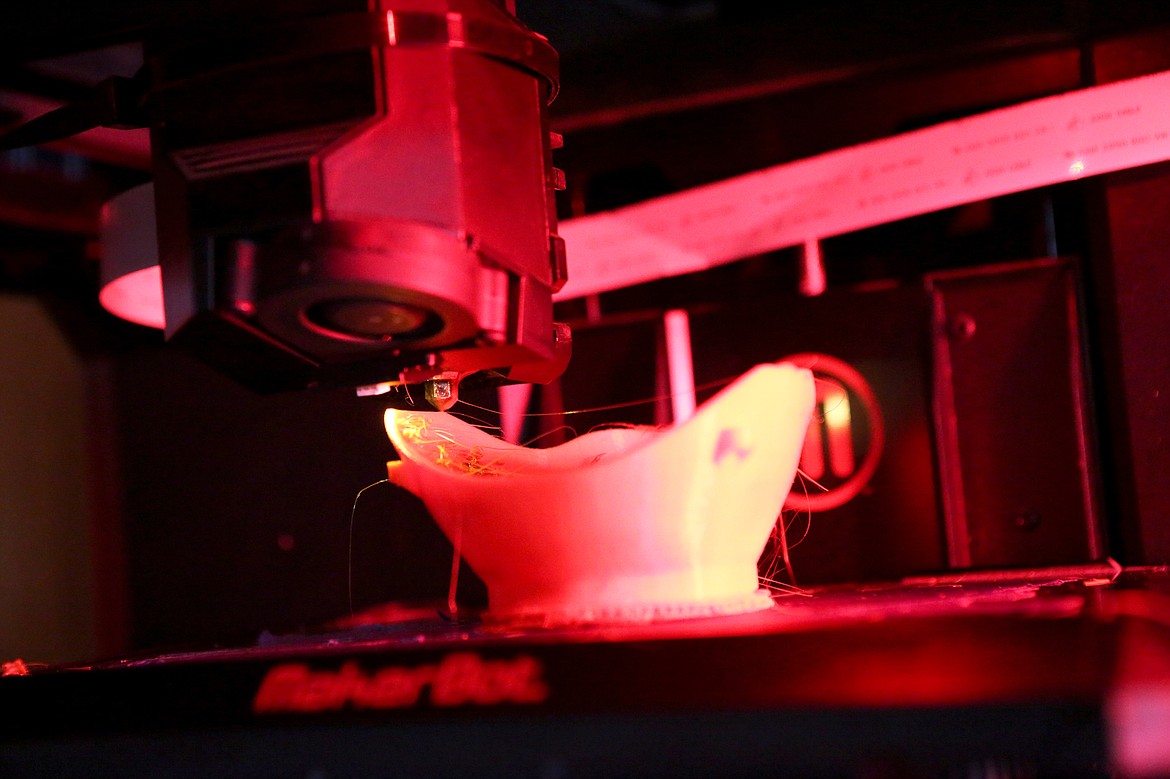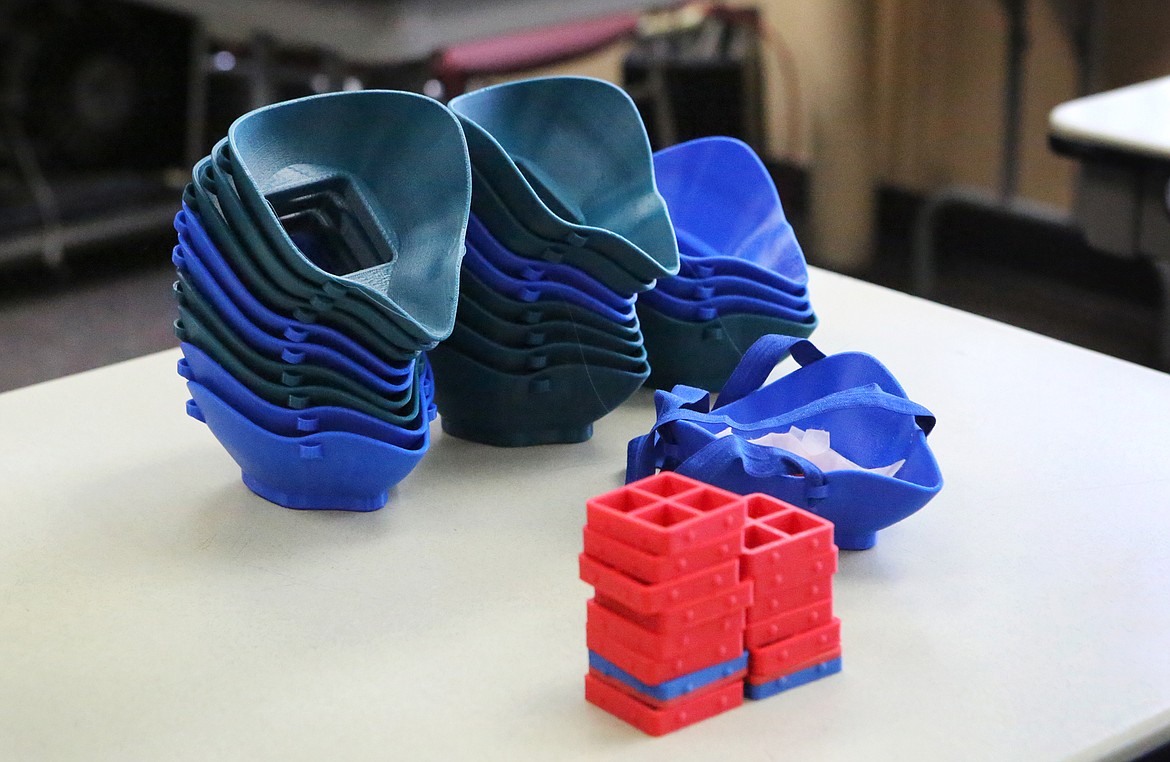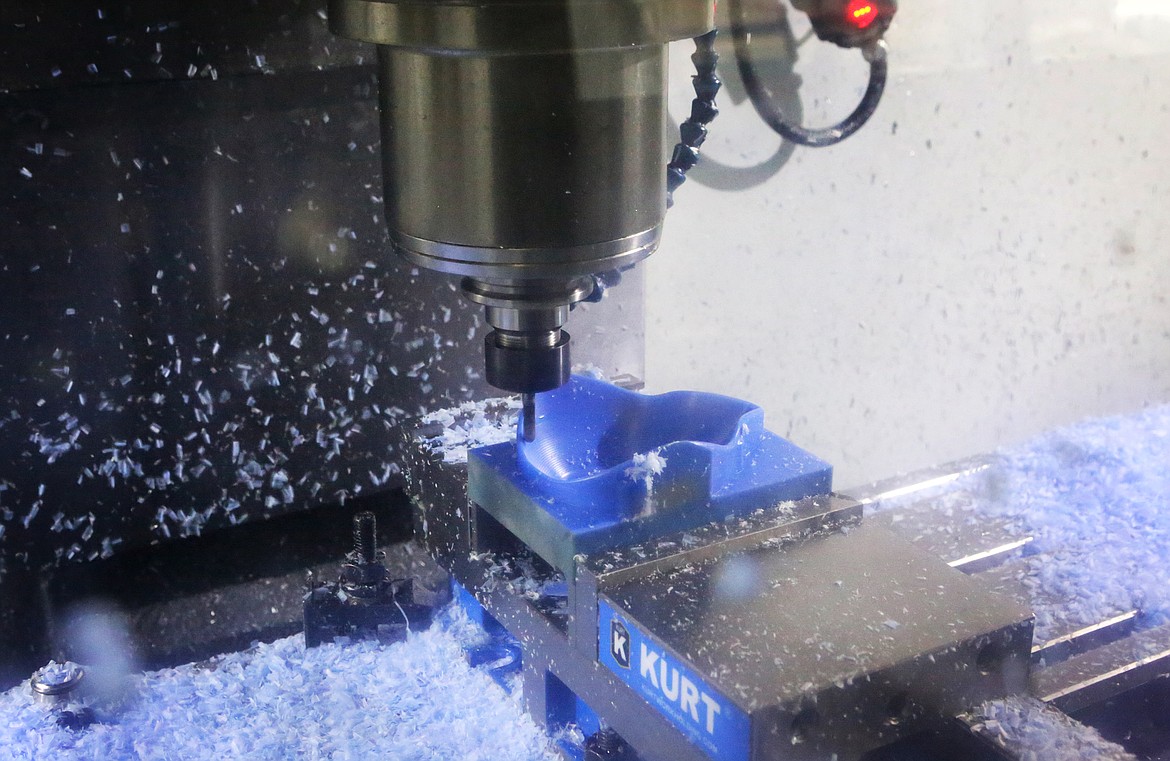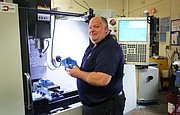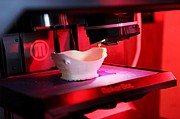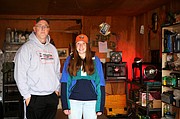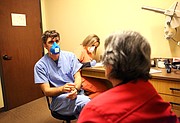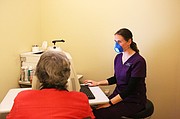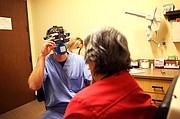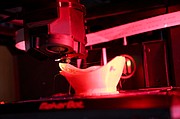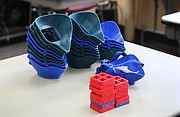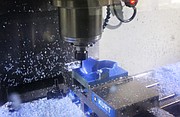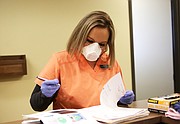Educators, professionals use 3D printers to make N95 masks
A small fleet of 3-D printers whir away in Todd Spangler’s garage, exuding a musical scritch-scratch as they methodically transform melted plastic into N95 masks.
Spangler, a chemistry teacher at Whitefish High School, has been producing masks out of his garage around the clock since Monday using plans created by a three-man team in Billings. Neurosurgeon Dusty Richardson, dentist Spencer Zaugg, and his son Colton Zaugg created a printable N95 mask and released their designs to the public so others could do the same.
“You want to help out any way you can and we have some capabilities to be able to do that,” Spangler said. “Let’s see what we can do.”
The N95 respirator masks, unlike more traditional fabric models, can protect against the coronavirus by filtering out at least 95% of very small particles, including bacteria and viruses. When word of the COVID-19 pandemic broke out, civilians bought up these masks in droves, resulting in a shortage for those who need them most — health-care workers on the front lines. To fill that need, Spangler and other educators and medical professionals in the valley with access to 3D printers have begun producing masks.
“I’ve been running them 24 hours, pretty much,” Spangler said.
Among the quick-thinking producers is robotics teacher Rob Reynolds in Eureka, technology teacher Troy Smith of Glacier High School and advanced manufacturing instructor Dan Leatzow with Flathead Valley Community College, just to name a few.
It takes the printers about four hours to produce each mask, which is made in two parts, the first being the curved piece that fits over the face with a second square, window-like piece that holds the filter material in place. The 3-D printed masks can be sanitized and worn multiple times in many medical environments, apart from procedures like surgery where personal protective equipment is required to be sterile.
The regular N95 masks are made entirely out of the special filter fabric, while the 3-D printed masks are mostly plastic, limiting the amount of N95 fabric needed for each mask.
“You can take an existing mask and you can get about six of these 3-D printed masks from it,” Spangler explained.
The design can also be scaled to different sizes and multiple civilian producers are experimenting with masks that are 80% or 90% of the original design, which may fit women’s faces better. To be clear, the largest local hospital, Kalispell Regional Medical Center, is not currently experiencing a shortage of masks, but Spangler and others want to be ready if and when a shortage occurs.
The hospital recently launched Project PPE, a supply drive to help bolster existing supplies. It is currently accepting contributions of N95 masks, latex-free gloves, face shields and other disposable face masks, according to the site. To date, the hospital has received 200 donated masks, including 26 that were 3-D printed along with others that were sewn or commercially made. Hospital spokesperson Mellody Sharpton said their goal is to build an inventory of 10,000 masks as a preemptive measure.
“We are thinking ahead,” Sharpton said. “Should we reach a point when our supplies are significantly diminished, we want to have options available for staff and others.”
While the printed masks are appreciated, she noted they aren’t completely equivalent to the real thing.
“We view these as one more available tool to use in this crisis, but is not a current replacement recommended PPE in certain circumstances,” she said.
For Spangler, the issue hits particularly close to home since his wife Holly works as a certified ophthalmic technician at Glacier Eye Clinic.
Kalispell Middle School teacher Kyle Streitmatter is in a similar position — his wife is also in the medical field.
“Since we’re kind of stuck at home doing nothing, I jumped on the opportunity to do something, especially since my wife is a nurse up at Whitefish,” he said. “It’s a little more personal for me. … I think that right now, it’s if and when the hospitals run out of their masks, then they can use these instead.”
Streitmatter and Spangler’s wives have also aided in the effort by piloting the masks and providing feedback on their fit and breathability.
Holly Spangler said her clinic doesn’t do a lot of surgeries or invasive procedures and therefore had a limited supply of N95 masks on hand. She and her co-workers have been testing the 3-D printed masks produced by her husband and plan to try out the scaled-down versions soon, which may provide a better fit.
“We know there’s nothing that’s 100% effective in keeping the virus out,” she said, “but we’re not going to stay home and let people lose vision.”
Patients with conditions such as retinal disease and macular degeneration may require injections at regular intervals, and missing or delaying treatment could result in reduced eyesight, she said.
While she continues to do her part by serving the public, both she and her husband have been inspired by seeing others step up and help in their own ways.
“People are trying to use the materials and tools the have and the skills they have to help in anyway they can,” Todd Spangler said. “That’s a really neat thing to see.”
The schools, including Kalispell Middle School and FVCC, among others, have given the OK for teachers who can operate the printers to use their materials.
Dan Leatzow, an advanced manufacturing instructor at FVCC, is taking things to the next level by experimenting with ways to machine-produce masks, which is more efficient than using 3-D printers, although he’s got six of those running in the meantime.
Leatzow said transitioning the design 3-D printers to machines was fairly easy.
The CNC machine he’s been using “enables you to take the piece that you’ve designed and create instructions for computer-driven machines to make the piece,” he explained. While a 3-D printer creates a form by adding layers, Leatzow’s computer-aided machine uses a process known as subtractive manufacturing. He begins with solid block of Nylon 6 material and the machine whittles and shapes it, removing layers, until it becomes the desired form.
“I started 3-D printing to address a need, and I wondered if I could machine faster,” he said. All indicators point to yes.
He can machine one side of the mask in 42 minutes and estimates the second side will take even less time, for a total production time of about an hour-and-a-half per mask, compared to the four hours a 3-D printer takes to perform the same task.
So far, Leatzow has made 24 full-size masks and about another dozen that are either 80% or 90% of the original. On Friday afternoon, FVCC staffers Don Skare, the facilities coordinator, and Peter Fusaro, the director of trades and industrial arts, joined the effort and tied elastic straps to the completed masks.
“It’s gratifying to work for an organization that gives me the latitude to engage in something like this,” Leatzow said. “FVCC’s mission is to promote excellence and life-long learning through a focus on student success and community need. Well, this is a community need.”
Reporter Mackenzie Reiss can be reached at mreiss@dailyinterlake.com or (406) 758-4433.



